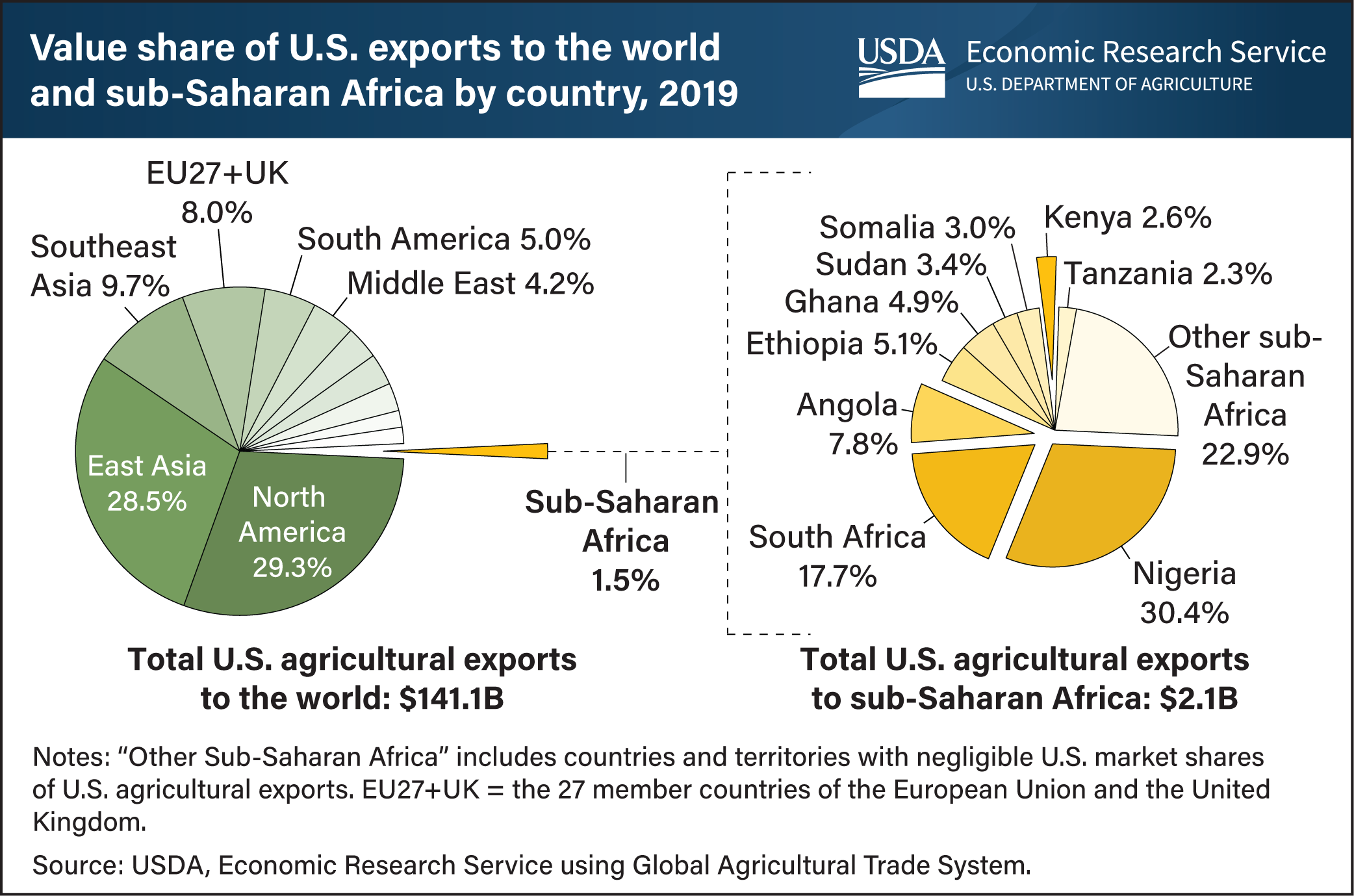Rising incomes, urbanization position sub-Saharan Africa as growing export market for U.S. agricultural goods
- by Adam Gerval
- 6/28/2022

Sub-Saharan Africa is a major influencer in global agricultural trends. Rising incomes, growing populations, and increasing urbanization position the region as a growing market for agricultural exports. Dietary patterns in many areas of this region have shifted with the rise in per-capita incomes as consumers increasingly favor more grain- and protein-rich diets over traditional staple foods. Agricultural production in this 46-country region is largely limited to subsistence farming, so many countries rely on imports to meet growing demand for agricultural and food products. The United States has emerged as a major supplier of agricultural exports to sub-Saharan Africa, particularly wheat and poultry. In 2001, the United States exported less than $0.5 billion in agricultural goods to the region. In 2019, $2.1 billion in U.S. agricultural exports—an estimated 1.5 percent of all U.S. agricultural exports—were shipped to sub-Saharan African countries. More than half that value was accounted for by Nigeria, South Africa, Angola, and Ethiopia. As economic development trends observed in these four countries continue to take shape in other markets, the outlook for U.S. export growth is strong. This chart first appeared in USDA’s Economic Research Service COVID-19 Working Paper: Single Commodity Export Dependence and the Impacts of COVID-19 in Sub-Saharan Africa, released in May 2022.

